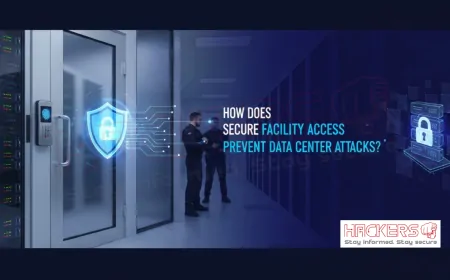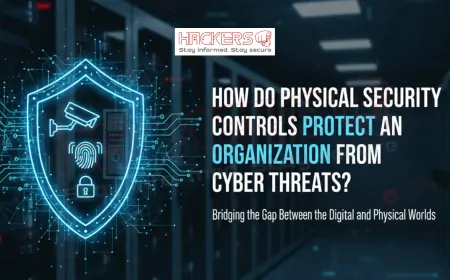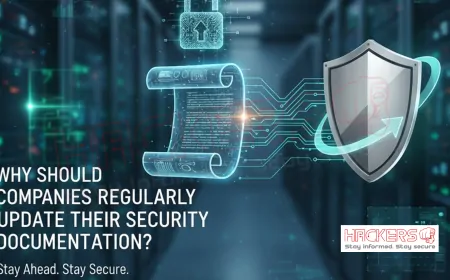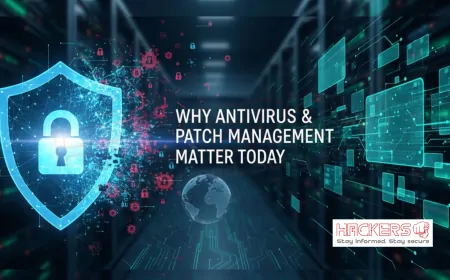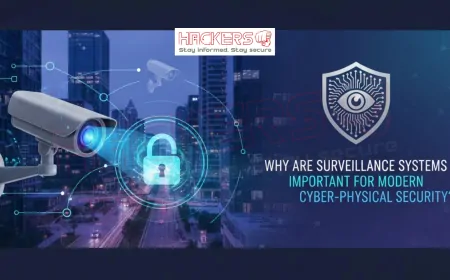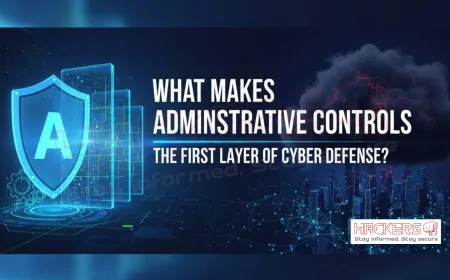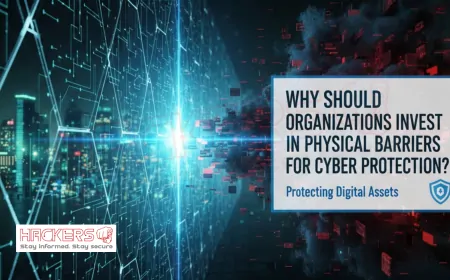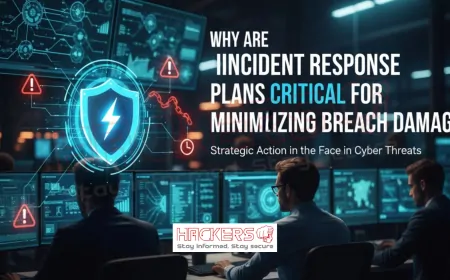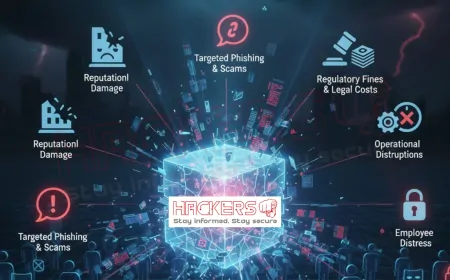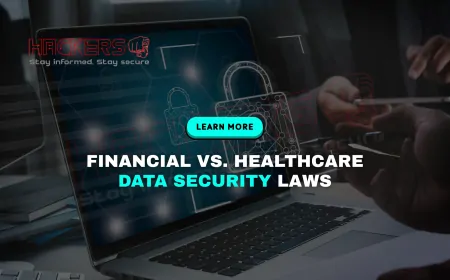How Do Physical Security Controls Protect an Organization from Cyber Threats?
Imagine a hacker slipping into your office building unnoticed, plugging a device into a server, and walking away with sensitive data. Or picture a drone hovering outside, capturing network signals to launch a cyber attack. In 2025, as cyber threats become more sophisticated, blending digital and physical worlds, protecting your organization requires more than just strong passwords and firewalls. Physical security controls, those tangible measures like locks, cameras, and access badges, play a vital role in defending against cyber dangers. They act as the first line of defense, preventing unauthorized physical access that could lead to digital breaches. According to recent reports, cyber-physical threats are on the rise, with AI-enabled breaches and insider risks topping the list. This blog post will explore how these controls safeguard organizations, using simple explanations that beginners can follow. We'll look at key measures, real examples, and tips for implementation, showing why integrating physical security is essential in today's threat landscape.
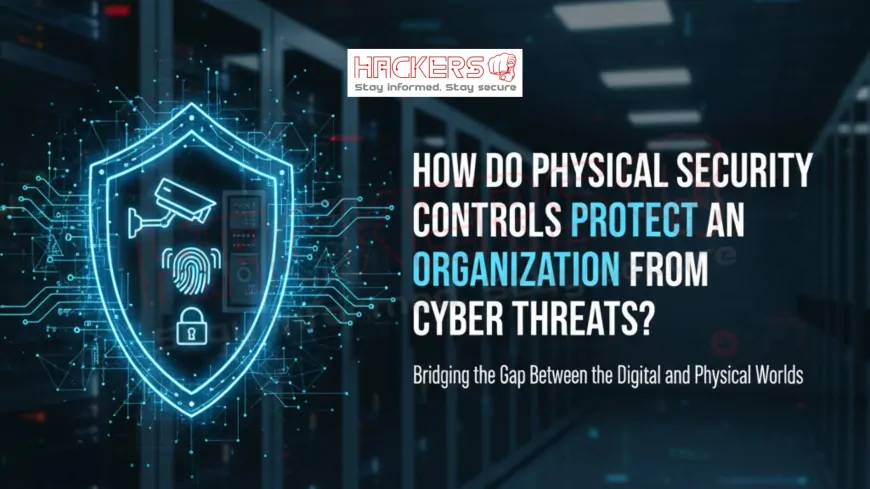
Table of Contents
- Understanding Physical Security Controls
- The Convergence of Physical and Cyber Security
- Key Physical Security Measures
- How These Controls Mitigate Cyber Threats
- Benefits of Strong Physical Security
- Challenges in Implementation
- Real-World Case Studies
- Best Practices for 2025
- Conclusion
- FAQs
Understanding Physical Security Controls
Physical security controls are the measures an organization puts in place to protect its physical assets, such as buildings, equipment, and people, from unauthorized access or harm. These include locks on doors, security cameras, alarm systems, and even guards at entrances. In the context of cybersecurity, they prevent physical actions that could compromise digital systems.
For beginners, think of physical security as the walls and gates around a castle, while cyber security is the moat and archers. Both are needed for full protection. In 2025, with threats like drone misuse and AI-enabled breaches on the rise, physical controls are more important than ever.
These controls are part of a layered security approach, often called defense in depth. This means having multiple barriers so if one fails, others still protect. Physical measures ensure that even if a hacker bypasses online defenses, they cannot physically tamper with hardware.
Understanding them begins with recognizing their types: preventive, like fences; detective, like sensors; and corrective, like backup power. Each plays a role in overall security.
The Convergence of Physical and Cyber Security
In today's world, physical and cyber security are no longer separate. Cyber threats often have physical elements, such as someone stealing a laptop to access networks. Conversely, physical breaches can lead to cyber issues, like cutting power to disable alarms.
Reports from 2025 highlight this convergence. The Global Cybersecurity Outlook notes growing cyber inequity and sophisticated threats that blend physical and digital realms.
This intersection means organizations must integrate both. Physical controls protect against tailgating, where someone follows an employee inside to gain access, potentially leading to data theft. In 2025, with remote work hybrid models, securing physical sites remains crucial.
Beginners should note that ignoring physical aspects leaves doors open for cyber attackers. Strong controls close those gaps, creating a holistic defense.
Key Physical Security Measures
Several key measures form the backbone of physical security. Access control systems, like keycards or biometrics, ensure only authorized people enter sensitive areas.
- Surveillance cameras: Monitor activities to detect intrusions.
- Alarms and sensors: Alert to unauthorized access or movements.
- Physical barriers: Fences, locks, and bollards prevent entry.
- Environmental controls: Protect against fire or flooding that could damage IT equipment.
- Security personnel: Guards who patrol and respond to threats.
These measures are evolving in 2025 with trends like hybrid-cloud integration and AI for smarter detection.
How These Controls Mitigate Cyber Threats
Physical controls mitigate cyber threats by blocking physical access to digital assets. For example, securing server rooms prevents tampering with hardware, which could install malware.
In 2025, insider threats are a top concern, where employees or contractors misuse access.
Surveillance deters and detects, while barriers stop drone attacks capturing signals. Environmental controls ensure systems stay online during physical disruptions.
Overall, they reduce the attack surface, the points where threats can enter.
Benefits of Strong Physical Security
Strong physical security offers many benefits. It reduces breach risks, saving costs. Breaches average millions, but prevention cuts losses.
It ensures compliance with regulations requiring physical protections. It also boosts employee confidence, knowing the workplace is safe.
Additionally, it protects intellectual property from theft. In 2025, with rising threats, these benefits are amplified.
Challenges in Implementation
Implementing physical security has challenges. Cost is one: High-tech systems are expensive for small businesses.
Balancing security with usability: Too strict controls can hinder work. Integration with cyber systems requires expertise.
Solutions include starting small, using scalable tech, and training staff.
Real-World Case Studies
In one case, a data center used biometrics to prevent unauthorized entry, stopping a potential breach.
Another: A company faced a drone threat but barriers and sensors protected networks.
Lessons show integration is key.
Best Practices for 2025
Best practices include regular assessments and tech updates.
- Train employees on security.
- Integrate with cyber tools.
- Monitor trends like AI.
- Conduct drills.
| Control Type | Description | Cyber Protection |
|---|---|---|
| Access Control | Badges, biometrics | Prevents unauthorized data access |
| Surveillance | Cameras, sensors | Detects intrusions early |
| Barriers | Fences, locks | Blocks physical tampering |
Conclusion
In conclusion, physical security controls protect organizations from cyber threats by preventing physical access that could lead to digital breaches. They offer benefits like risk reduction and compliance, despite challenges. In 2025, integrating them with cyber measures is crucial for resilience.
What are physical security controls?
Measures like locks and cameras to protect physical assets.
Why do they matter for cyber threats?
They prevent physical actions leading to digital breaches.
What is defense in depth?
Layered security with multiple barriers.
How do access controls help?
Limit entry to authorized people only.
What role do cameras play?
Monitor and detect intrusions.
Are drones a threat?
Yes, for capturing signals or access.
What about insider threats?
Controls restrict misuse of access.
How to integrate with cyber security?
Use unified systems for monitoring.
What costs are involved?
Initial setup, but saves on breaches.
Do small businesses need them?
Yes, scalable options exist.
What is tailgating?
Following someone inside unauthorized.
How often assess controls?
Regularly, at least annually.
What trends in 2025?
AI integration and hybrid-cloud.
Can controls prevent all threats?
No, but reduce risks significantly.
What is cyber-physical convergence?
Blending of physical and digital threats.
How train employees?
On awareness and procedures.
What environmental controls?
Protection from fire or flood.
Examples of breaches prevented?
Data centers using biometrics.
Best practice for barriers?
Use sturdy, monitored ones.
Why update controls?
Threats evolve constantly.
What's Your Reaction?









